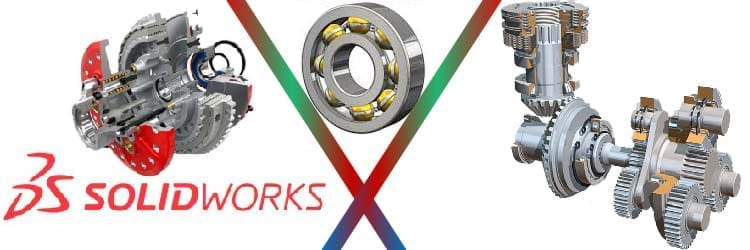SolidWorks

Course Information
Duration: 30 Hours
Fee: $1200
Description
This course is designed to help students learn product design using SOLIDWORKS, a popular feature-based 3D parametric solid modelling software.
In this course, the students will get in-depth knowledge of all important tools as well as their real world applications in conformity with widely accepted
ISO standards, GD&T, 3D Printing, and standard practices followed in manufacturing processes in industry. In addition, students will be assigned a
team project of their choice for better understanding of design intent and will also be required to make a portfolio of the work done.
Topics Covered
1. User Interface and Basics of SOLIDWORKS
- What is SOLIDWORKS?
- Design Intent
- File references
- Opening files
- User Interface
2. Introduction to Sketching
- 2D Sketching
- Saving Files
- Sketch Entities
- Sketch Relations
- Dimensioning Sketches
- Editing Sketches
3. Basic Part Modeling
- Basic Modeling
- Choosing Sketch Plane
- Extruded Feature
- Revolved Feature
- Thin Extruded and Revolved Features
- Modify View Orientation
4. Reference Geometry and Material Removal
- Creating a New Plane
- Creating a Reference Axis
- Creating Reference Points
- Creating a Extrude Cut
- Creating Revolve Cut and Hole
- Creating a Fillet
- Creating a Chamfer
5. Patterning
- Why Use Patterns?
- Linear Pattern
- Circular Pattern
- Mirror Pattern
- Sketch Driven Pattern
6. Shelling and Ribs
- Creating a Shell Feature
- Creating a Rib Feature
- Draft Analysis
7. Editing Features
- Editing a Sketch
- Changing a Sketch Plane
- Edit Using the Move Tool
- Edit Using Cut, Copy, & Paste
- Deleting, Suppressing, and Reordering
8. Advanced Part Modeling
- Sweep Feature
- Loft Feature
- Cut Sweep Feature
- Helical and Spiral Curves
- 3D Sketches
9. Assembly Modeling
- Concept of Assembly
- Types of Assembly
- Adding Components
- Moving and Rotating Components
- Mates
- Bottom-Up Assembly
- Checking Clearances
- Exploded Assemblies
- Bill of Materials
10. Surface Modeling
- Creating Extrude Surfaces
- Creating Revolved Surfaces
- Creating Swept and Loft Surfaces
- Trimming and Untrimming Surfaces
- Creating Extended Surfaces
- Knitting Surface
- Filleting Surface
11. Drafting
- Sheet Formats and Templates
- Template Properties
- Defining Title Block
- Generating Model Views
- Generating Projected Views
- Generating Section Views
- Generating Auxiliary View
- Generating Detail View
- Creating and Managing BOM
- Modifying a BOM
- Dimensioning Views
- Applying GD & T Symbols
12. Sheet Metal
- What are Sheet Metal Parts?
- Concept of Bend Allowance
- Creating a Base Flange and Tab
- Creating an Edge Flange
- Creating a Sketched Bend
- Creating a Miter Flange
- Creating a Hem Feature
- Creating Jog and Lofted Bends
- Creating a Swept Flange
- Creating a Flat Pattern
- Creating a Forming Tool